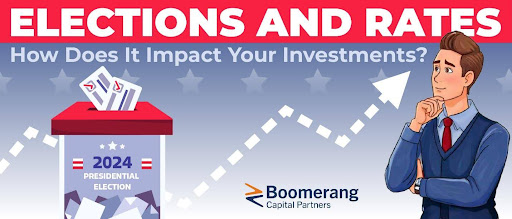
Elections and Rates: How Does It Impact Your Investments?

By Rob Jafek, Principle | Boomerang Capital Partners
We have been asked what the impact of the elections will be on opportunities for investing in properties to repair and sell and the answer is: very little. There are very few current negative efforts at a national level that have any sort of legs, and local laws and policies remain supportive as we just don’t have enough housing. Politicians (broadly speaking) support increasing the housing supply and, for now, accept (and even encourage) the role rehabbers play. Negative political efforts in other jurisdictions have included proposing increased capital gains taxes (based on holding period), restrictive zoning laws, raising standards, and increased disclosure requirements. These types of efforts have been introduced (and defeated) in California, Oregon, New York, Washington, and Minnesota. Since the underlying causes are driven by a lack of housing supply and affordability, which won’t go away, we expect continuing dialogue among investors, homeowners, and governments, but, importantly, these discussions are likely to be a net positive for the industry. For example, both national parties have put forth plans that include incentives for rehabbing the current housing stock. While there are serious doubts as to the utility of either plan, the important thing is that renovation is viewed as part of the solution. Historically there has also been support, such as the rehabber market being defined as an ‘essential’ activity during the Pandemic, which allowed it to remain open and active.
What about the impact of decreased interest rates? Housing market volumes should also benefit from lower rates, but it is slow to do so for the time being. Sellers have been raising their prices roughly in line with the buyers’ pickup in the affordability that results from decreased mortgage rates. With the prices appearing elevated and further rate declines expected, the Fannie Mae Housing Confidence Indicator shows only 19% of buyers think it’s a good time to buy and 65% think it’s a good time to sell. This will lead to a continuation of the slow but stable recovery, which we expect to continue into the 1Q of 2025 when volumes should pick up again.